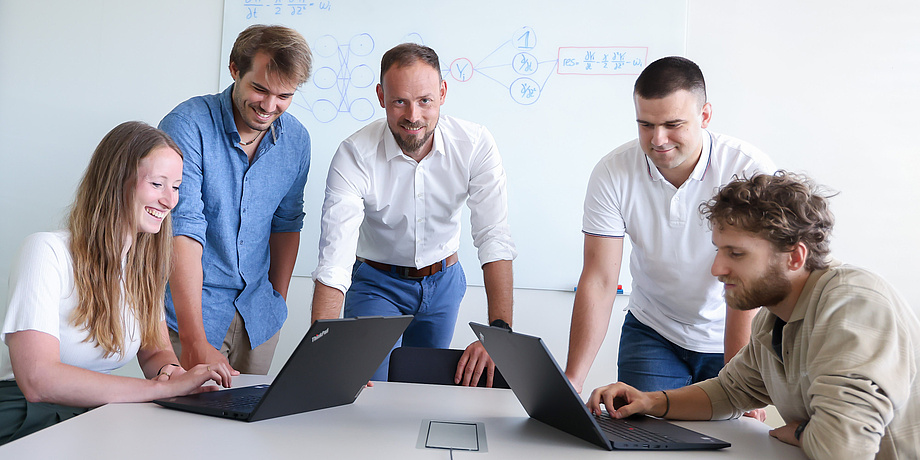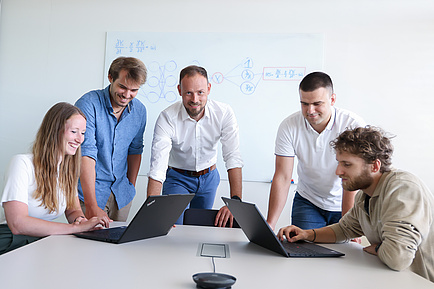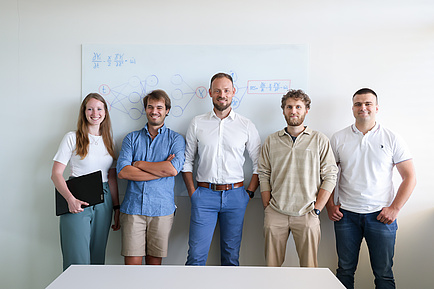Machine learning models are being used more and more widely. However, they need a lot of training data to deliver good results. In industrial applications, this wealth of data is often not available in sufficient quantities or can only be obtained using very expensive methods. For this reason, laboratory head Stefan Posch and his team at the Institute of Thermodynamics and Sustainable Propulsion Systems at TU Graz will combine traditional machine learning with physics-based methods in the “Christian Doppler Laboratory for Physics-driven Machine Learning in lndustrial Applications”, which opened today. The resulting physics-driven machine learning models will not only achieve their results using the available data, but also know the rules of physics that they must comply with. This reduces the amount of training data required while increasing accuracy. The use of such models can accelerate numerical simulations in the fields of structural or fluid mechanics and significantly shorten product development times. This will enable companies to bring innovative solutions to market faster and reduce product development costs.
Federal Ministry of Economy, Energy and Tourism funds innovative research into combining physics and machine learning
Wolfgang Hattmansdorfer, Minister of Economy, Energy and Tourism, whose ministry contributes significantly to the public funding of the CD laboratories, says: “Our industry must remain competitive – through intelligent, efficient and safe products. Artificial intelligence plays a key role here, especially when it is based on a sound knowledge of physics. This is exactly what is happening in the new CD lab. This is where state-of-the-art machine learning processes merge with engineering expertise. This not only saves time in development, but also increases the quality and safety of new technologies.”
“For digital models to be useful for industrial applications, their results must correspond to the real world,” explains Stefan Posch. “If we incorporate a knowledge of physics directly into machine learning models, we need significantly less data. This spells a major advantage in areas such as mechanical engineering, where data is often difficult or very time-consuming to generate. At the same time, the models become more transparent and comprehensible and can, to a certain extent, also make reliable predictions for situations that were not included in the original data. This opens up new possibilities for the safe and efficient application of artificial intelligence in technology.”
Universal methods as a goal
Stefan Posch has been working in the relatively new research field of physics-driven machine learning for around five years. At that time, the COMET K1 Large Engines Competence Center (LEC) launched the COMET module LEC HybTec, in which the main foundations for the current CD laboratory were created. The LEC continues to support research on the scientific side together with several institutes at TU Graz and the Graz Centre for Machine Learning.
The industrial partners Andritz Hydro GmbH (drives and generators), BRP-Rotax GmbH & Co KG (small engines), the Engineering Centre Steyr GmbH & Co KG as part of Magna International Inc. (chassis), Everllence SE (formerly MAN Energy Solutions SE) (large engines) and Palfinger Europe GmbH (cranes and lifting platforms) are part of the CD lab. They contribute their in-house data and true-to-life problems as well as their experience with numerical simulations. The aim is to find fundamental, universally valid methods with which the combination of machine learning and physics delivers reliable and reproducible results that align with reality. The corporate partners can then adapt these results to their needs. The biggest challenge is that adding rules of physics greatly increases the complexity of the model. Therefore, a major part of the research work will be to optimise the model by reducing the physics parameters without sacrificing accuracy.
About Christian Doppler labs
In Christian Doppler labs, application-orientated basic research is carried out at a high level, with outstanding scientists collaborating with innovative companies. The Christian Doppler Research Society is internationally regarded as an example of best practice in promoting this collaboration. Christian Doppler labs are jointly funded by the public sector and the participating companies. The most important public funding organisation is the Federal Ministry of Economy, Energy and Tourism (BMWET).





